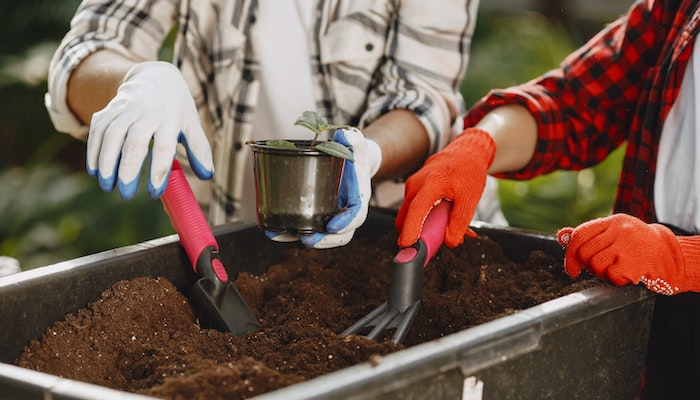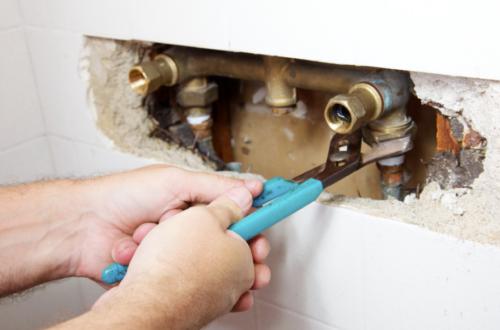In an era where “green” and “sustainable” are buzzwords, garden lovers and environmental enthusiasts alike are diving into organic ways to enrich soil. Two methods stealing the spotlight in this eco-conscious movement are composting and worm composting, or vermicomposting. While both practices aim to recycle organic waste into valuable soil enhancers, they are fundamentally different processes, each with its own set of advantages and disadvantages. This blog provides a comprehensive guide on the key differences between compost and vermicompost.
Composting: Overview

So, what’s composting all about? Simply put, composting is a nature-driven cycle that converts organic waste, like your kitchen leftovers and garden trimmings, into a nutrient-packed soil enhancer. It’s a fantastic and Earth-friendly way to recycle what would otherwise end up in landfills. This magic trick is performed by aerobic bacteria, those that thrive in oxygen-rich conditions, turning your waste into a valuable, nutrient-dense, crumbly soil supplement.
How Does Composting Work?
The composting journey starts when you gather organic waste—think food scraps, leaves, and grass clippings—and pile them up in a designated composting bin or heap. Aerobic bacteria naturally found in your yard get to work, breaking down this organic material. These tiny workhorses need oxygen, which is why you’ve got to give your compost pile a good stir regularly. When all is said and done, you’re left with nutrient-rich compost. Depending on several factors, like what you’ve tossed in and the weather conditions, this can take a few weeks to several months.
Vermicomposting: Overview

Vermicomposting is another method of composting organic waste but uses worms, specifically red wigglers, to convert organic materials into a humus-like material known as vermicompost. Unlike traditional composting, vermicomposting is faster and can process waste more efficiently.
How Does Vermicomposting Work?
In vermicomposting, organic waste is placed in a bin along with red wiggler worms. These worms consume the organic material and excrete nutrient-rich castings. Since worms are nature’s original recyclers, they can convert organic waste into vermicompost much faster than aerobic microbes alone.
9 Key Differences Between Compost and Vermicompost

#1: Microbial Activity vs. Worm Activity
When it comes to regular composting, it’s the aerobic microbes that take center stage. These tiny, oxygen-loving creatures are hard at work breaking down your kitchen leftovers and yard clippings. They transform this organic waste into a rich, soil-like material chock-full of nutrients. These microbes are everywhere, from the soil in your garden to the vegetable peels in your kitchen. Keeping them happy means frequently stirring your compost pile to make sure it’s getting plenty of oxygen.
Worm-based composting, or vermicomposting, leverages the digestive powers of specific worms—red wigglers—to handle your organic waste. As these worms munch through the waste, they produce nutrient-rich ‘worm poop,’ otherwise known as worm castings. Not only do these worms help break down waste, but they also aerate the compost pile as they wiggle around, taking care of what would otherwise be a chore for you.
#2: Time
When it comes to speed, these two methods are far from equal. Old-school composting can test your patience, as it might take several months before you can use your compost in the garden. The time frame varies based on factors like the mix of green and brown materials, the outside temperature, and the size of your pile. Vermicomposting, however, fast-tracks this process. Some setups can give you ready-to-use compost in a mere three weeks, thanks to the efficient digestive systems of the worms.
#3: Space Requirements
Space is another area where these methods differ. Traditional composting generally asks for a bigger commitment in terms of space—a 3×3-foot area in your backyard, at a minimum. The pile’s height will also grow as you add more to it. In contrast, worm-based composting is a compact operation that you can manage in buckets or small, specialized containers. It’s a perfect match for apartment dwellers or those with limited outdoor real estate.
#4: Aeration
Aeration is vital for traditional composting. Those aerobic microbes need oxygen, which means you’ll be out there turning your compost pile at least weekly. It’s a bit of a workout, particularly with larger piles. But worms take the labor out of aeration. They’re nature’s little tillers, moving through the pile and naturally aerating it as they go. That’s a huge plus if you’re not keen on manual labor.
#5: Odor
Both methods should be relatively odor-free if managed correctly. However, if a traditional compost pile isn’t properly aerated, it can start to stink due to the creation of anaerobic conditions. Worm-based composting usually sidesteps this issue. Worms break down the material more effectively, reducing the chances of bad smells. Plus, worm composting bins often come with lids and other features to keep odors in check.
#6: Nutrient Content
Both traditional compost and worm compost are packed with essential nutrients like nitrogen, phosphorus, and potassium. But worm compost often takes the nutrient game to the next level. The worms’ digestive systems make these nutrients more accessible to plants, effectively boosting your soil’s fertility. Moreover, worm castings often contain a greater diversity of beneficial microbes and enzymes, making them a superior choice for enriching your garden soil.
#7: The pH Factor
Regular compost can sometimes lean towards the alkaline side, depending on what you put in it. This isn’t ideal for plants that prefer more acidic or neutral soils. Worm compost, on the other hand, tends to have a more balanced pH. So, you have a bit more flexibility when it comes to the types of plants that will thrive in worm compost.
#8: Texture
Then there’s the matter of texture. Traditional compost has a somewhat rough texture, which is good for soil structure but less so for retaining water. Worm compost is generally finer and crumbly, making it a standout when it comes to holding moisture. This is especially beneficial in dry climates.
#9: Cost
Finally, let’s talk money. Starting a traditional compost pile can be pretty budget-friendly. You just need a designated area and maybe a simple bin. With worm composting, you’ll need to buy the red wigglers and possibly a specialized container. While that’s an upfront cost, the faster composting process might make it more economical in the long term.
FAQs

Q1: Is Vermicompost a Type of Fertilizer?
Absolutely, vermicompost is an organic fertilizer superstar. It packs a punch with key nutrients like nitrogen, phosphorus, and potassium, and it comes teeming with helpful microbes. Unlike chemical fertilizers, it’s eco-friendly and amps up your soil’s water-holding abilities and overall structure. This compost is widely used in preparing garden soil.
Q2: Is Vermicompost Better Than Cow Dung?
While both are organic soil enhancers, vermicompost usually boasts a more balanced nutrient profile and fewer weed seeds or pathogens. Your choice between the two will hinge on what plants you’re growing, your soil’s specific needs, and what’s easiest for you to get.
Q3: What Material is Vermicompost?
Think of vermicompost as a nutrient-packed blend created by worms munching on your kitchen leftovers and garden refuse. The end result is this dark, moist substance that smells like fresh earth. Not only is it packed with nutrients that plants crave, but it’s also teeming with good bacteria that make your soil healthier.
Q4: What Are The Three Types of Vermicomposting?
When it comes to vermicomposting, there are three main approaches you can take: Windrow, Bin, and Continuous Flow. Windrow is what the big farms generally use, turning massive piles of organic matter into compost. For the backyard gardener, the Bin method is a go-to choice. Continuous Flow is more of a “set it and forget it” system that’s usually found in commercial operations. Each method has its own perks and challenges, depending on how much composting you’re planning to do.
Q5: Is Vermicompost Good for All Plants?
Most plants absolutely love vermicompost. It’s like a multivitamin, providing a variety of easily absorbed nutrients while also helping the soil hold onto water. But let’s be clear: not every plant will be head over heels for it. Some plants are picky about their soil’s pH levels. So, before you go adding vermicompost willy-nilly, make sure to know what your particular plants are like.
Conclusion
Composting and vermicomposting are both rock-star ways to recycle your organic waste and level up your garden soil or indoor plant quality. Each has its strong points and limitations, and the perfect fit really boils down to your own needs and what you’re looking to accomplish. Either way, you’re doing something awesome for the planet and your plants!





